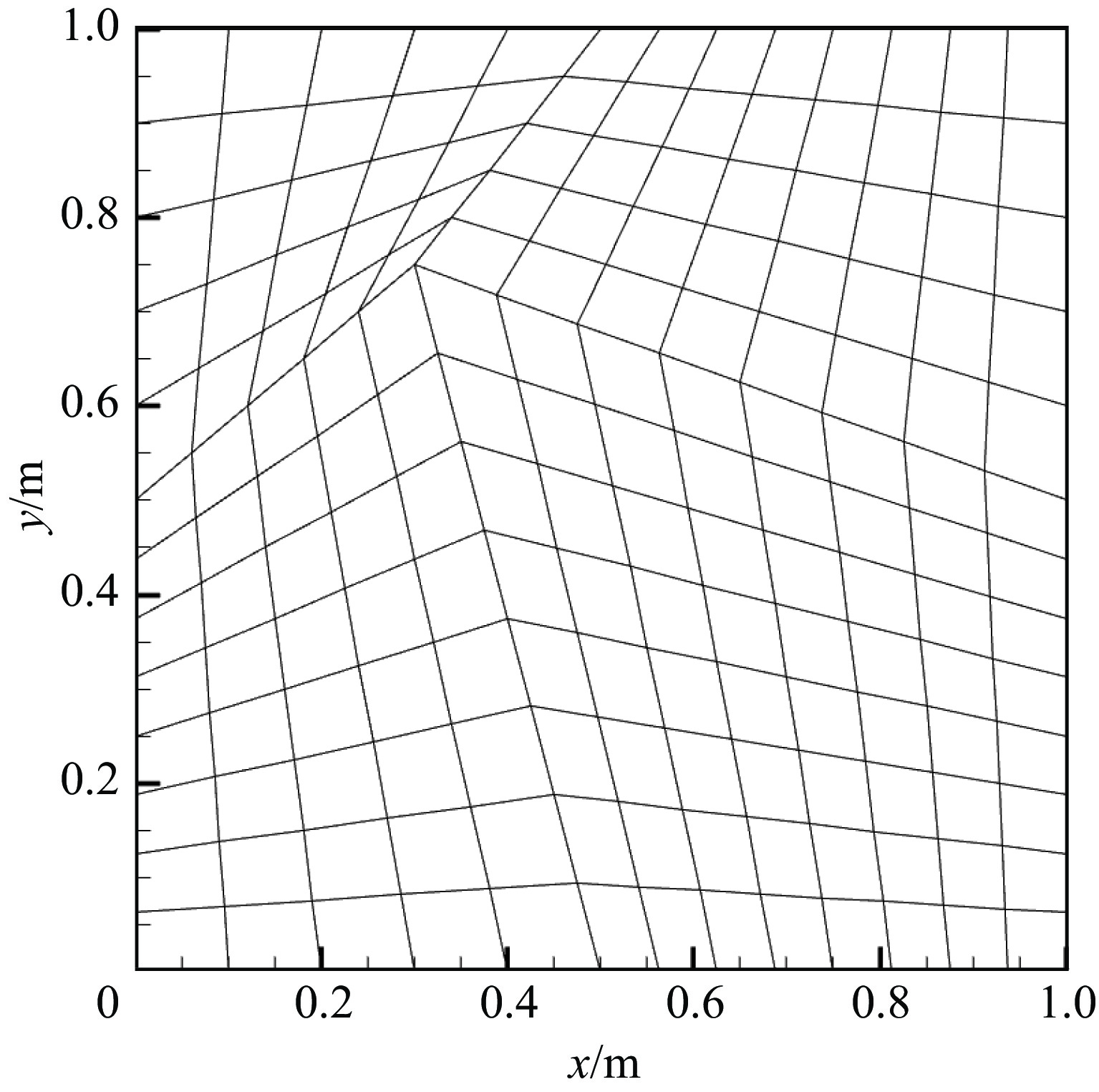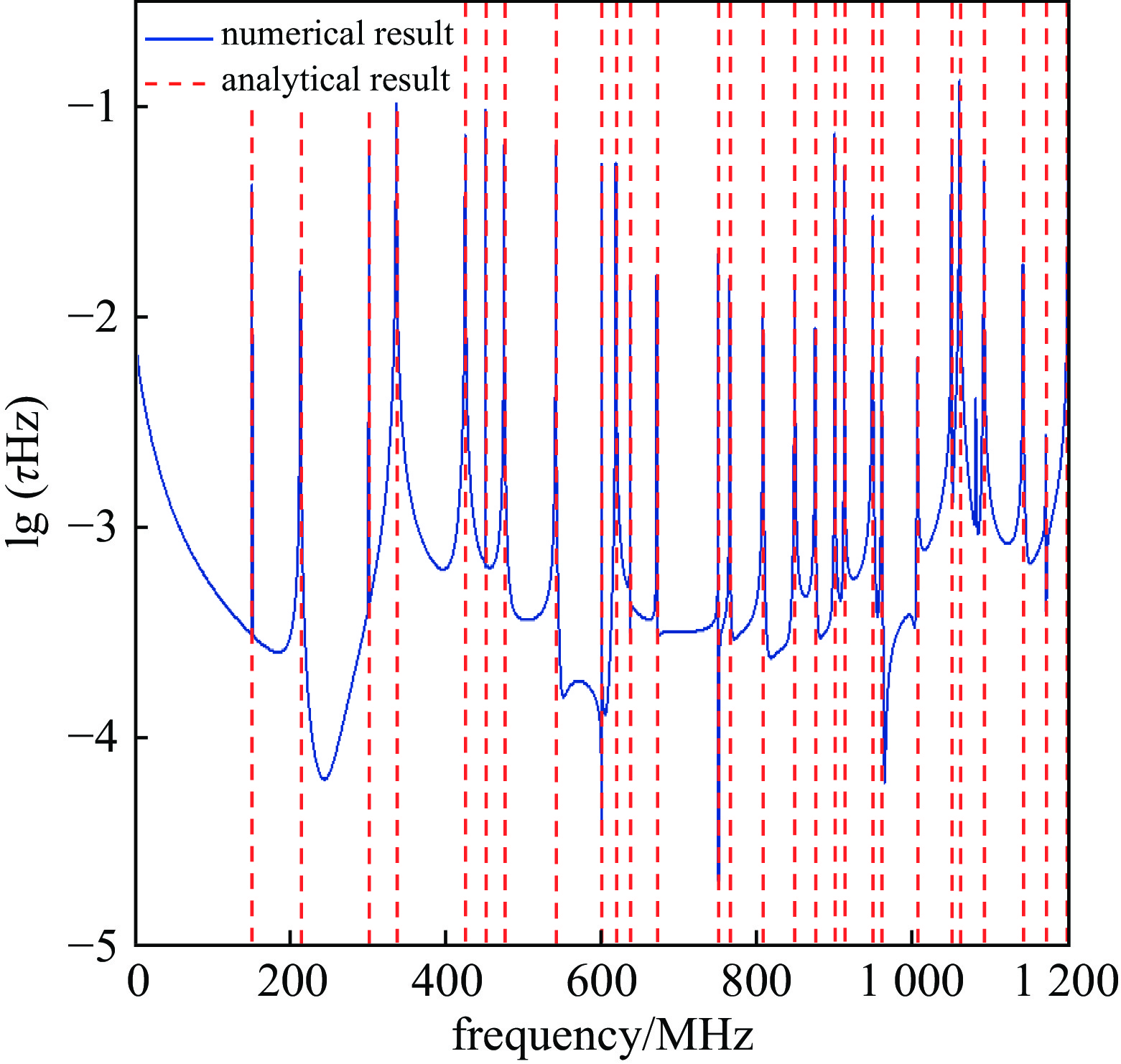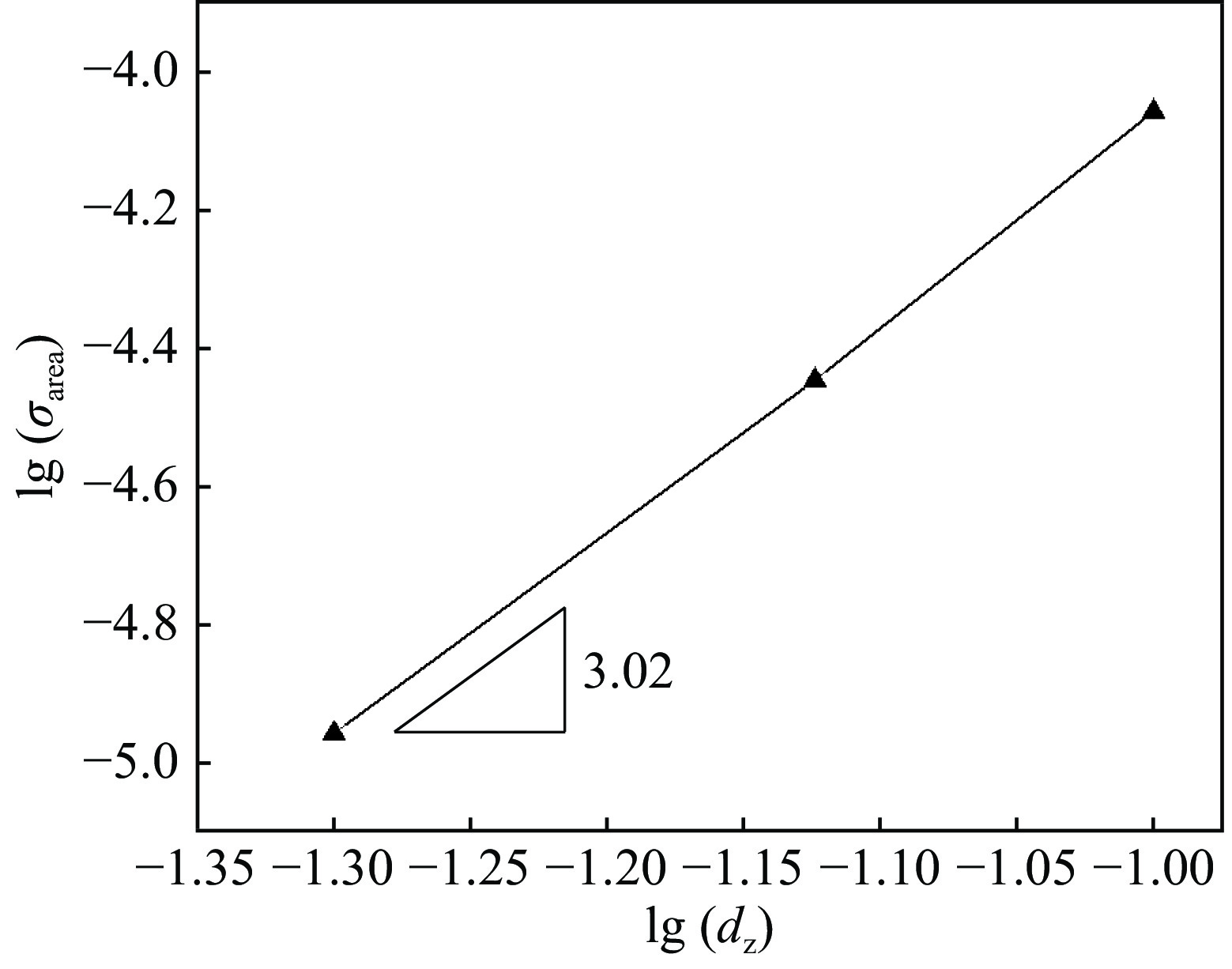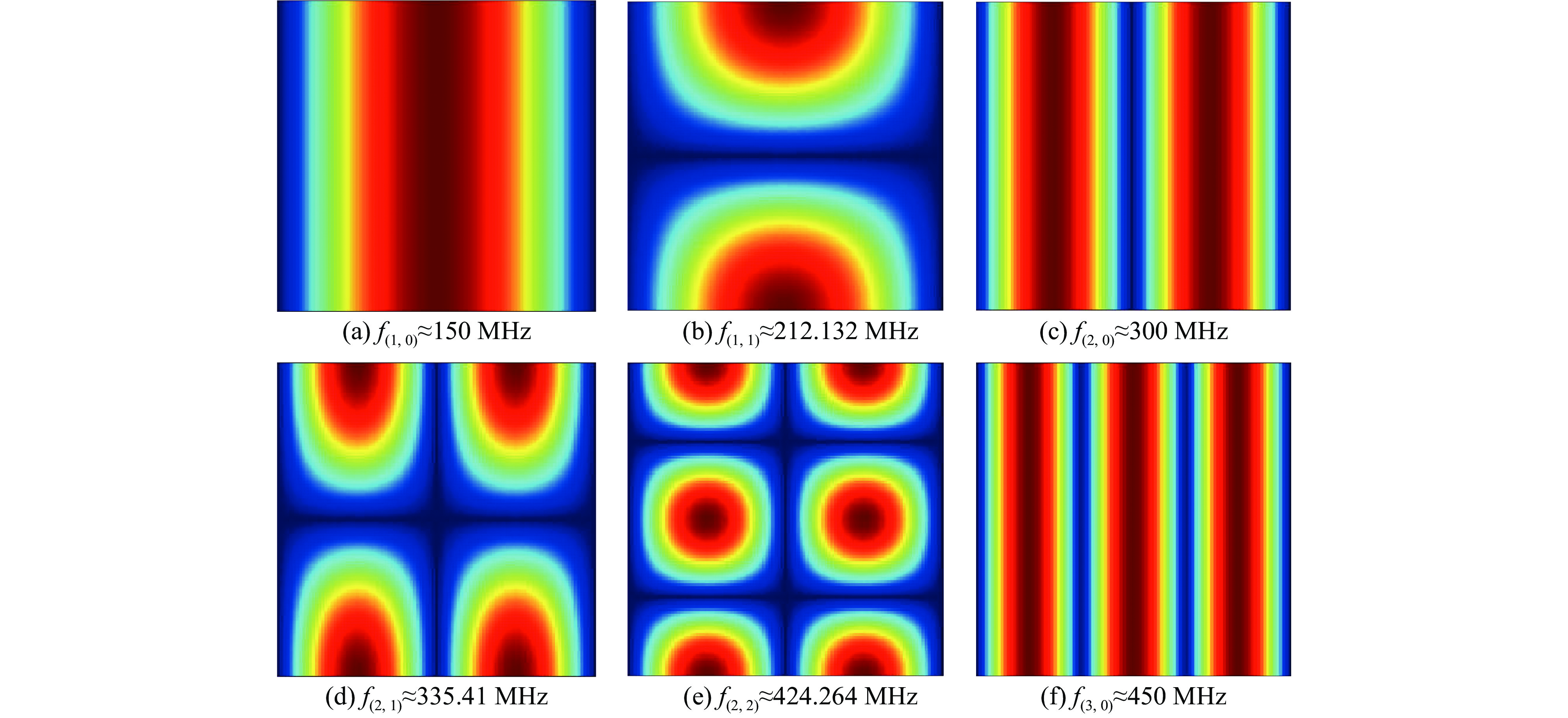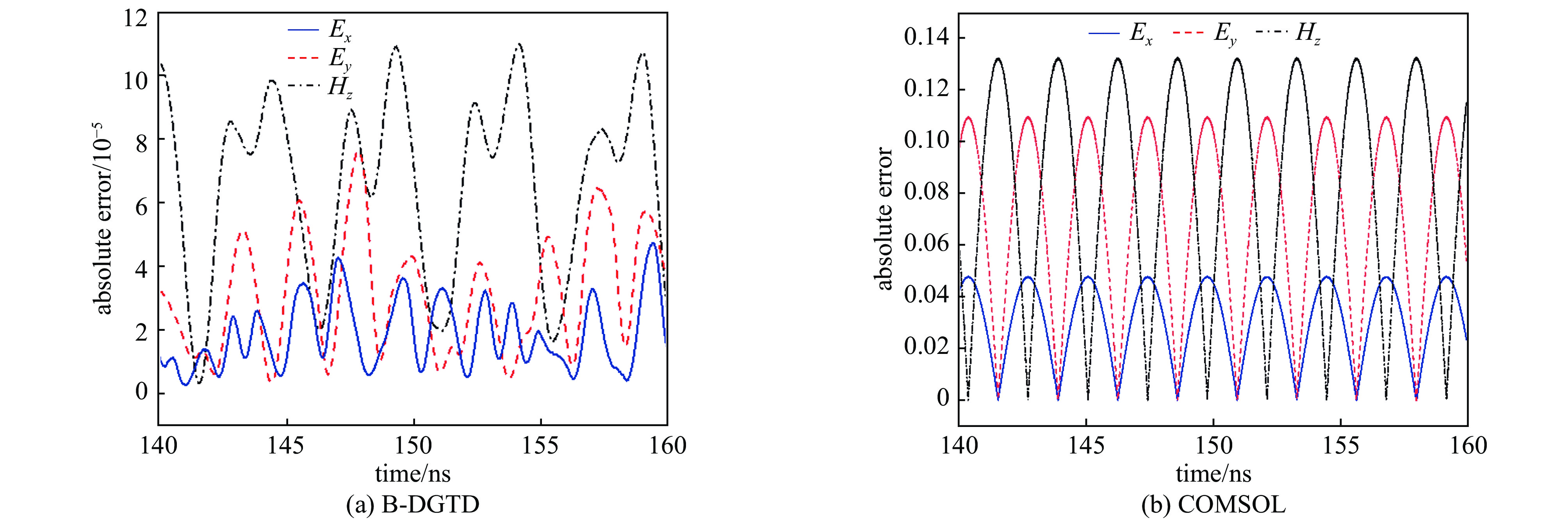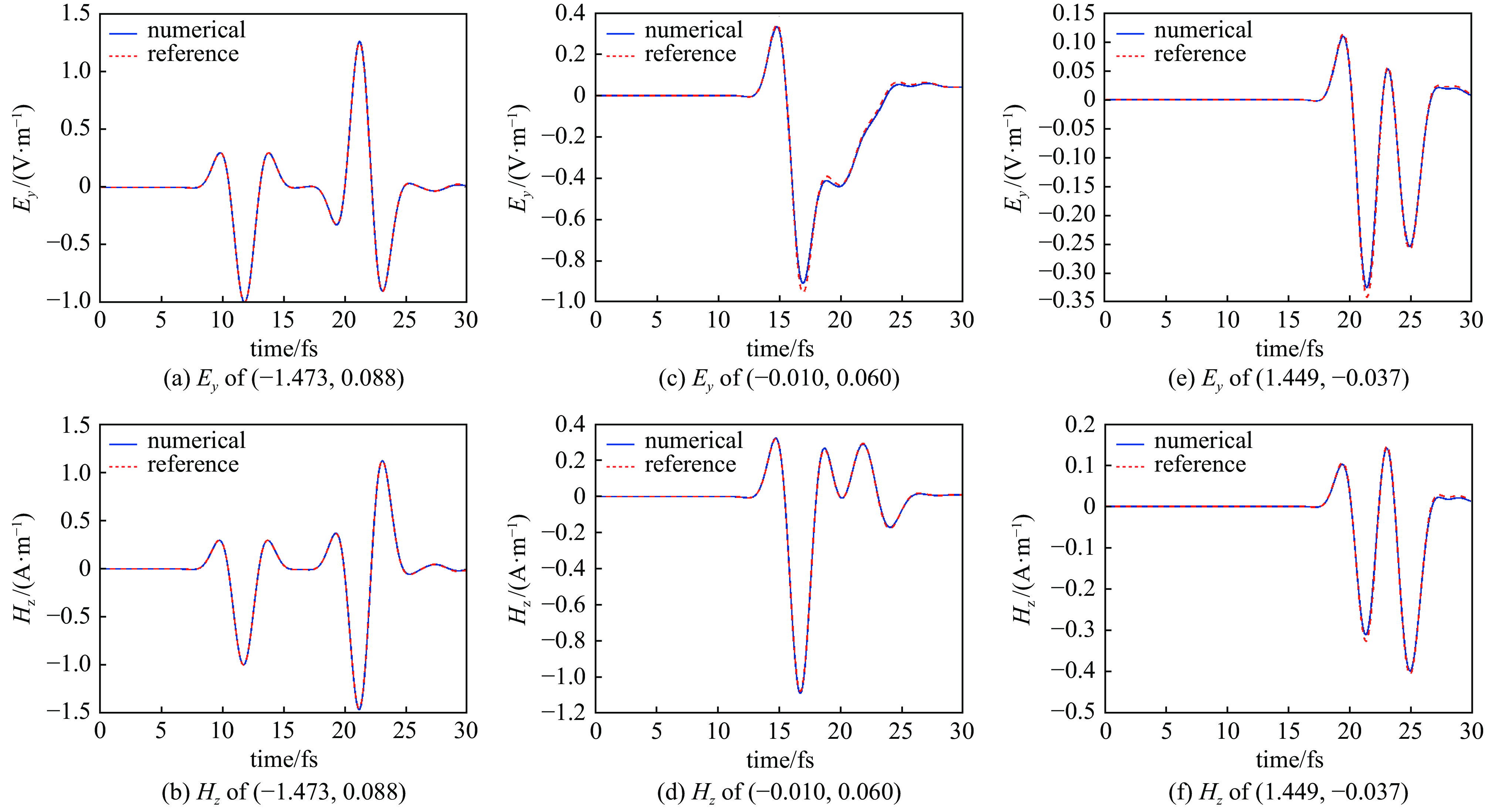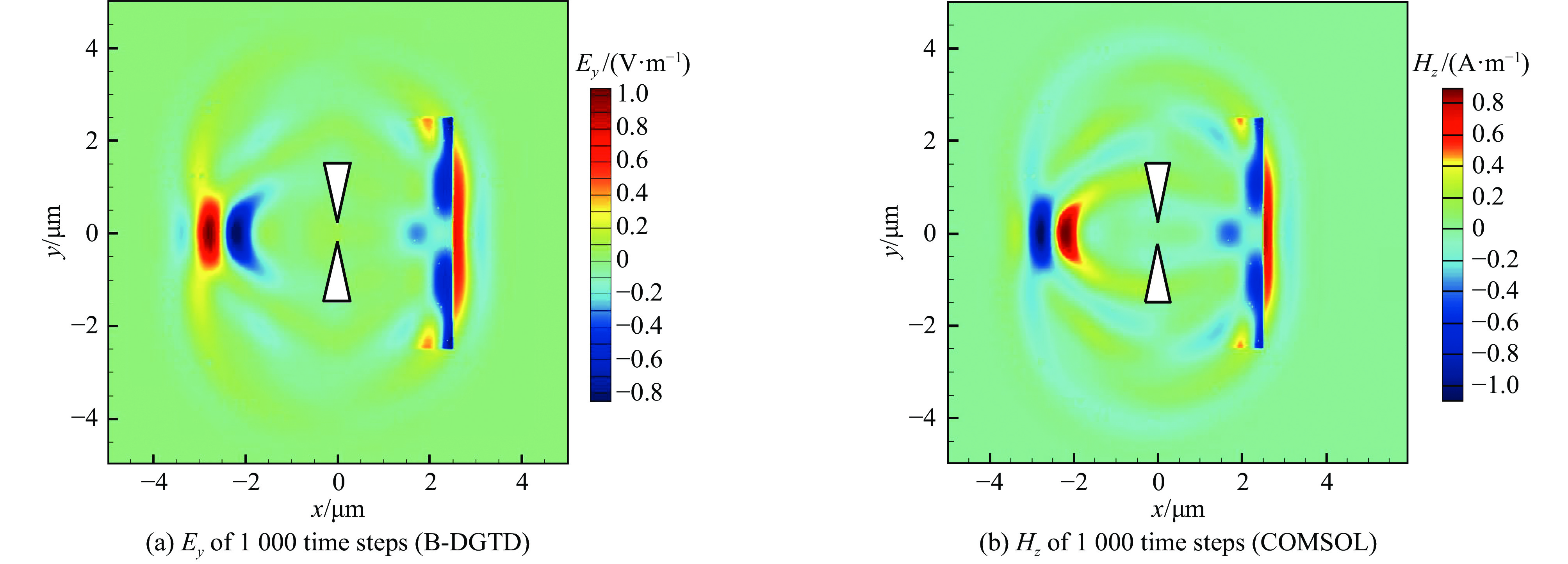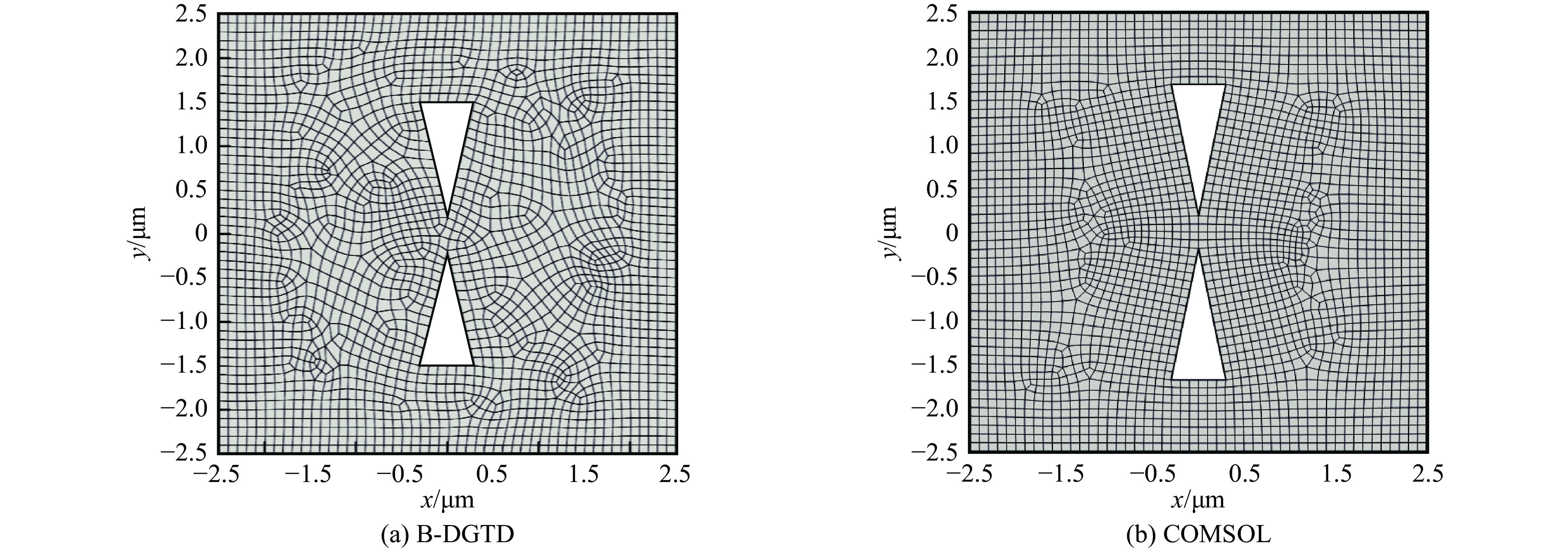B-spline discontinuous Galerkin method for Maxwell’s equations
-
摘要: 在计算电磁学领域,时域间断有限元算法(DGTD)一般基于模型空间的不规则网格划分和单元上高阶多项式插值计算。同样的插值阶数,二维空间四边形网格划分比三角形网格划分具有更少的自由度和更高的计算效率。然而,传统基于等参变换和多项式张量积插值的基函数空间在四边形单元上仅具有低阶完备性,且稳定性和精度受网格畸变影响较大。为此,提出了一种基于不规则四边形网格的高阶B样条插值DGTD方法,用于Maxwell方程的求解。文章采用的B样条基不仅具有高阶多项式空间的插值完备性,而且完全消除了单元内部自由度。此外,Maxwell方程离散系统的各系数矩阵还具有精确的解析形式。使用该方法分析腔体的本征模和楔形体的电磁散射,结果表明,相较于COMSOL软件最大允许时间步长提高2.5倍,计算所需未知量减少25%,证实了本文算法的高稳定性和高精度特点。Abstract: In the field of computational electromagnetics, the discontinuous Galerkin time domain (DGTD) method typically relies on irregular grid partitioning in model space and high-order polynomial interpolation calculations on elements. When comparing two-dimensional spatial quadrilateral mesh partitioning to triangular mesh partitioning at the same interpolation order, quadrilateral meshing offers fewer degrees of freedom and higher computational efficiency. However, traditional basis function spaces, relying on isoparametric transformations and polynomial tensor product interpolation, only possess low-order completeness on quadrilateral elements. Consequently, their stability and accuracy are significantly influenced by grid distortion. To address this challenge, this thesis proposes a high-order B-spline interpolation DGTD method based on irregular quadrilateral meshes for solving Maxwell's equations. The advantage of B-spline interpolation lies in its high-order completeness on irregular elements, effectively eliminating internal degrees of freedom within the elements. Furthermore, the coefficient matrices of the discrete system for Maxwell's equations also possess exact analytical forms. Analyzing the eigenmodes of cavities and the electromagnetic scattering of wedge structures, thus the maximum allowable time step increasing by 2.5 times and reducing the required unknowns by 25% compared to COMSOL software, the proposed algorithm exhibits notable advantages in terms of higher stability and precision.
-
表 1 腔体的谐振频率
Table 1. Analytical and numerical results for resonant frequencies of different modes
mode analytical/MHz B-DGTD/MHz error (B-DGTD)/% COMSOL/MHz error (COMSOL)/% (1,0) 150.000 150.002 0.0013 149.540 0.3067 (3,2) 540.833 540.800 0.0061 541.598 0.1414 (4,1) 618.466 618.400 0.0107 622.269 0.6149 (4,4) 848.528 848.399 0.0152 847.794 0.0865 (5,3) 874.643 874.480 0.0186 878.505 0.4416 (6,2) 948.528 948.800 0.0287 950.451 0.2027 (7,1) 1060.660 1060.974 0.0296 1062.114 0.1371 (10,0) 1500.000 1500.481 0.0321 1501.771 0.1181 (11,0) 1650.000 1650.589 0.0357 1645.462 0.2750 (11,1) 1656.804 1657.584 0.0471 1665.451 0.5219 -
[1] Joseph R M, Taflove A. FDTD Maxwell's equations models for nonlinear electrodynamics and optics[J]. IEEE Transactions on Antennas and Propagation, 1997, 45(3): 364-374. doi: 10.1109/8.558652 [2] Goorjian P M, Taflove A, Joseph R M, et al. Computational modeling of femtosecond optical solitons from Maxwell's equations[J]. IEEE Journal of Quantum Electronics, 1992, 28(10): 2416-2422. doi: 10.1109/3.159548 [3] Körpinar T, Demirkol R C, Körpinar Z, et al. Maxwellian evolution equations along the uniform optical fiber[J]. Optik, 2020, 217: 164561. doi: 10.1016/j.ijleo.2020.164561 [4] Anttu N, Mäntynen H, Sorokina A, et al. Applied electromagnetic optics simulations for nanophotonics[J]. Journal of Applied Physics, 2021, 129(13): 131102. doi: 10.1063/5.0041275 [5] Zhelyeznyakov M V, Brunton S L, Majumdar A. Deep learning to accelerate Maxwell’s equations for inverse design of dielectric metasurfaces[C]//2021 Conference on Lasers and Electro-Optics (CLEO). 2021: 1-2. [6] Zhao Ying, Lan Jun, Ding Dazhi. A high-order time-domain discontinuous Galerkin integral equation method for analysis of multiscale PEC objects[J]. IEEE Antennas and Wireless Propagation Letters, 2024, 23(1): 104-108. doi: 10.1109/LAWP.2023.3318249 [7] Dong Ming, Chen Liang, Li Ping, et al. Discontinuous Galerkin time-domain method in electromagnetics: from nanostructure simulations to multiphysics implementations[M]//Ren Qiang, Yan Su, Elsherbeni A Z. Advances in Time-Domain Computational Electromagnetic Methods. Hoboken: Wiley, 2022: 135-198. [8] Ainsworth M. Dispersive and dissipative behaviour of high order discontinuous Galerkin finite element methods[J]. Journal of Computational Physics, 2004, 198(1): 106-130. doi: 10.1016/j.jcp.2004.01.004 [9] van Willenswaard L J C, Smeets S, Renaud N, et al. Computation of optical properties of real photonic band gap crystals as opposed to utopian ones[C]//2023 Conference on Lasers and Electro-Optics Europe & European Quantum Electronics Conference. 2023: ck_p_38. [10] Yee K S, Chen J S. The finite-difference time-domain (FDTD) and the finite-volume time-domain (FVTD) methods in solving Maxwell's equations[J]. IEEE Transactions on Antennas and Propagation, 1997, 45(3): 354-363. doi: 10.1109/8.558651 [11] Collino F, Fouquet T, Joly P. Conservative space-time mesh refinement methods for the FDTD solution of Maxwell’s equations[J]. Journal of Computational Physics, 2006, 211(1): 9-35. doi: 10.1016/j.jcp.2005.03.035 [12] Inan U S, Marshall R A. Numerical electromagnetics: the FDTD method[M]. Cambridge: Cambridge University Press, 2011. [13] Gedney S D. Introduction to the finite-difference time-domain (FDTD) method for electromagnetics[M]. Cham: Springer Nature, 2011. [14] Busch K, König M, Niegemann J. Discontinuous Galerkin methods in nanophotonics[J]. Laser & Photonics Reviews, 2011, 5(6): 773-809. [15] Kennedy C A, Carpenter M H, Lewis R M. Low-storage, explicit Runge–Kutta schemes for the compressible Navier–Stokes equations[J]. Applied Numerical Mathematics, 2000, 35(3): 177-219. doi: 10.1016/S0168-9274(99)00141-5 [16] 陈娟. 基于多元样条插值的有限元方法[M]. 北京: 科学出版社, 2020Chen Juan. Finite element method based on multivariate spline interpolation[M]. Beijing: Science Press, 2020 -





 下载:
下载:
